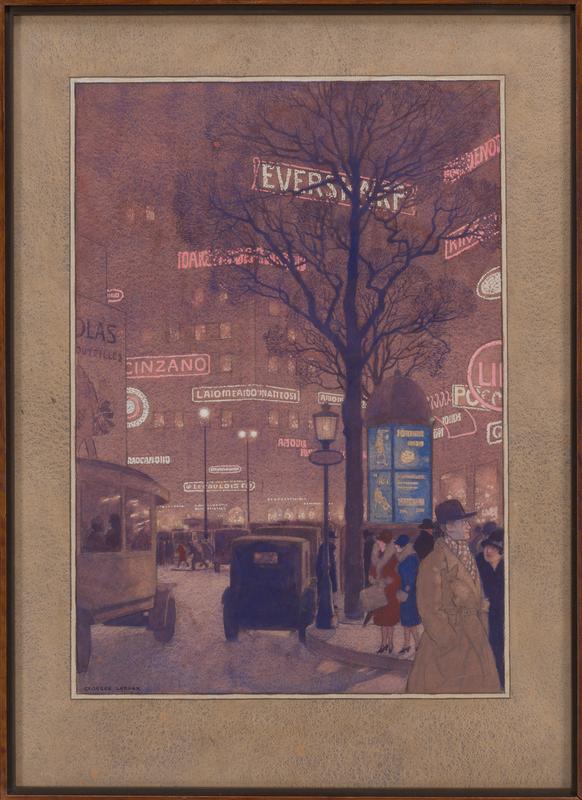
112. Georges Paul Leroux, The Grand Boulevards, Richelieu-Drouot Square by Night
| Artist | Georges Paul Leroux, French, Paris 1877–Meudon (Paris) 1957 |
| Title, Date | The Grand Boulevards, Richelieu-Drouot Square by Night (Les Grands Boulevards, le carrefour Richelieu-Drouot, la nuit), c. 1925 |
| Medium | Pencil, pen and India ink, watercolor, and gouache on brown paper |
| Dimensions | 18 7/8 × 12 3/16 in. (48 × 31 cm) |
| Inscriptions + Marks | Lower left: Georges Leroux |
| Provenance | [Jane Roberts Fine Arts, Paris, until 2020; to Weisberg]; Yvonne and Gabriel Weisberg, Minneapolis |
| Exhibition History | "Reflections on Reality: Drawings and Paintings from the Weisberg Collection," Mia, 2022–23 |
| Credit Line | Promised gift of Gabriel P. and Yvonne M.L. Weisberg, Minneapolis |
Acclaimed for the stunning Art Nouveau poster he produced for a popular attraction at the 1900 Exposition Universelle in Paris (cat. no. 111), Georges Leroux soon branched out. After receiving the Prix de Rome (Rome Prize) in 1906, he painted in Tuscany, Umbria, and Sicily in Italy. Having trained in the studio of Léon Bonnat at the École des Beaux-Arts (School of Fine Arts), Leroux was well grounded in the academic tradition, and his Italian views show an affinity with the works of Camille Corot. During World War I (1914–18) he was a camofleur whose unit camouflaged combat areas in France and Belgium. He also created images inspired by what he saw, including the horrors at the Battle of Verdun.
Leroux explored Parisian nightlife as well. The Grand Boulevards shows the bustling area where the rue de Richelieu, the rue Drouot, and three other streets converge. Theaters, cafés, restaurants, and a ziggurat of illuminated signs transform the intersection into a nocturnal world far different from its daytime appearance. While not a futuristic scene, Leroux’s symphony of vibrant, artificial light moves beyond Realism toward a representation of mood and color that is quite personal and original.
Leroux used the neon signs once prevalent here—it was the Parisian answer to New York’s Times Square—as the building blocks of his artistic environment. Further animating his modern, electrified world are taxis, a city bus, and pedestrians on the move. The artist then gave his novel impression of urban nightlife a shimmering, textured border.
GPW